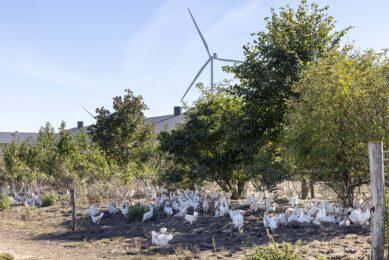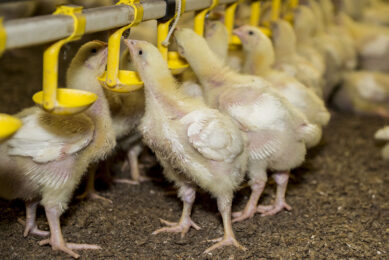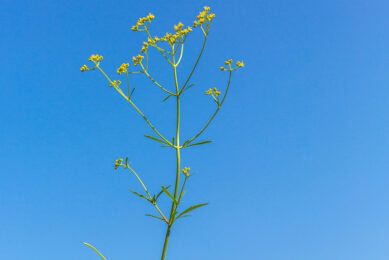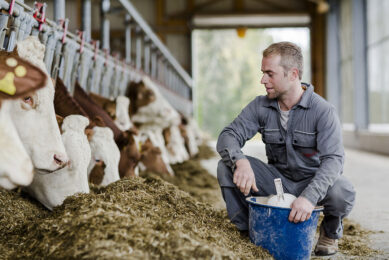Mitigating the detrimental effects of heat stress in poultry
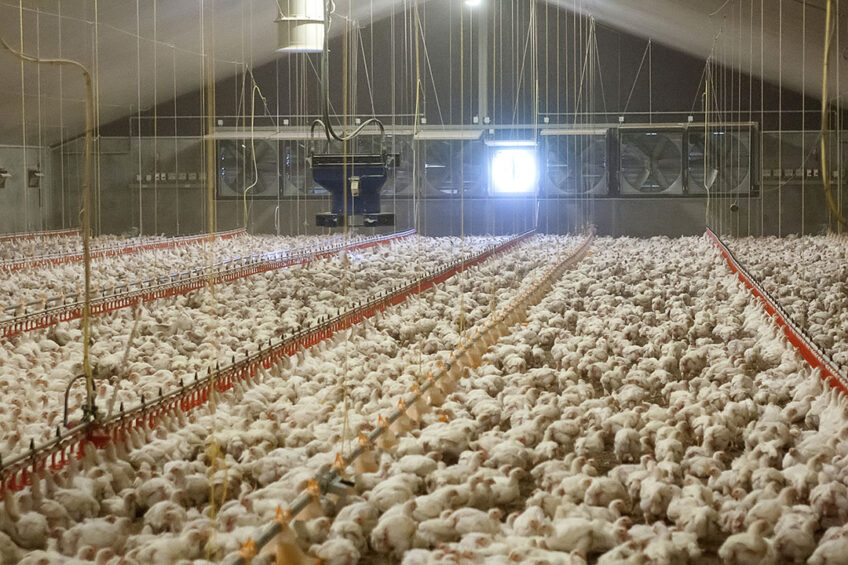
The rise in global population and urbanisation have led to increasing demand for higher quality protein food. As a result, the poultry industry has continued to grow and industrialise worldwide to meet nearly 40% of the increase in the universal demand for meat. Conversely, in recent years, global climate change is posing a major threat to the poultry industry.
Climate change is defined as deviations in the patterns of climate that can be identified (by using statistical tests, for example) by changes in average and standard deviation over a long period of time, typically more than 1 decade.
It is predicted that by the year 2100, the average global temperature will increase by 2-6°C. Global warming results in soil infertility, water scarcity, lower grain yields and quality, the diffusion of pathogens and heat stress in poultry.
Heat stress is a major concern for the poultry industry, particularly in tropical areas, as it compromises growth performance, reduces body weight gain and carcass yield, increases mortality rates, and affects poultry health and welfare. Heat stress further results in an estimated annual economic loss of US$ 128 to US$ 165 million to the US poultry industry alone. Therefore, it is essential to have a better understanding of the impact of global warming on the poultry industry to diminish its adverse effects.
Different types of heat stress
Heat stress results from a negative balance between the heat energy produced by a bird and the net energy flowing away from a bird’s body to the surrounding environment. The energy imbalance is caused by variation in environmental factors, metabolism rate and thermoregulatory mechanisms.
The concept of heat stress can be divided into acute heat stress and chronic heat stress. Acute heat stress refers to the exposure of a bird to a very high temperature for a short period of time. Chronic heat stress refers to the exposure of a bird to prolonged high temperatures for several weeks.
Effects of heat stress on broilers
Exposure to environmental temperatures above 30°C reduces feed intake, body weight, carcass weight, carcass protein, and muscle calorie content, and increases mortality rates in broilers. In addition, the breast muscle in heat-stressed broilers shows a significant decrease in initial pH and increased drip loss. Heat stress affects gut cells, increases intestinal permeability, and drastically reduces nutrient digestion and absorption.
Broilers subjected to heat stress have lower levels of total circulating antibodies, lower IgM and IgG levels, and reduced thymus, bursa, spleen, liver and lymphoid organ weights. Moreover, lower numbers of lymphocytes, reduced antibody response, as well as decreased phagocytic ability of macrophages is observed in heat-stressed broilers.
Chronic heat exposure is associated with a decline in meat chemical composition, a decreased proportion of breast muscle and increased proportion of thigh muscle in broilers. It also negatively affects fat deposition and meat quality.
Effects of heat stress on laying hens
Heat stress in laying hens leads to a reduction in feed intake and body weight, disruption of the hormones responsible for ovulation, decrease in the responsiveness of granulosa cells to luteinizing hormone, interruption in egg production, lower reproductive performance, and higher morbidity and mortality rates. Internal and external egg quality measures, egg size and number, egg weight, shell weight, shell thickness and strength, hatchability and chick quality are also considerably compromised by heat exposure, resulting in increased egg breakage.
In addition, increased panting under heat stress conditions enhances carbon dioxide levels and blood pH, decreases blood bicarbonate availability for eggshell mineralisation, decreases free calcium levels in blood and negatively impacts eggshell quality.
Since the thyroid is involved in the onset of puberty and reproductive function in birds, disruption of thyroid activity under heat stress conditions affects the reproductive performance of laying hens. The immunosuppressant effects of heat stress in laying hens include lower relative weights of thymus, spleen and liver, reduced systemic humoral immune response, lower numbers of circulating lymphocytes and higher numbers of heterophils. Heat stress can further cause morphological gut alterations, such as decreased villus height and fewer intraepithelial lymphocytes and IgA-secreting cells in the gut of laying hens.
Tackling heat stress
The first step is to increase ventilation to remove heat. A poultry barn will require supplemental fans providing ventilation and air mixing capacity for the size of the barn and the number of birds present. Withdrawing feed 6 hours before warm temperatures peak and re-introducing the feed after they have started to decline can lower the risk of heat stress.
During heat stress, birds’ water intake increases 2-4 times; it is therefore essential to have sufficient water space, operating drinkers and cool water temperatures at all times. In addition, electrolytes such as potassium chloride should be added to the flock’s drinking water prior to the heat stress period for up to 3 days.
Providing sodium bicarbonate in the feed and carbonated water is useful for hens in egg production, too. Supplementing drinking water with vitamins A, C, D, E and B complex is another strategy to reduce heat-stress-related mortality.
Constant challenge
Heat stress is an important environmental stressor challenging poultry production, health and welfare worldwide. Several intervention strategies, such as environmental management, nutritional manipulation, feed additives, and water supplementation with electrolytes, can be implemented to reduce the adverse effects of heat stress conditions. However, the effectiveness of these intervention strategies is variable or inconsistent.
Understanding the concept of heat stress and controlling environmental conditions are crucial to successful poultry production and welfare. However, further research is required to improve knowledge of the basic mechanisms associated with the impact of heat stress in poultry and to provide suitable intervention strategies to reduce these negative effects.




